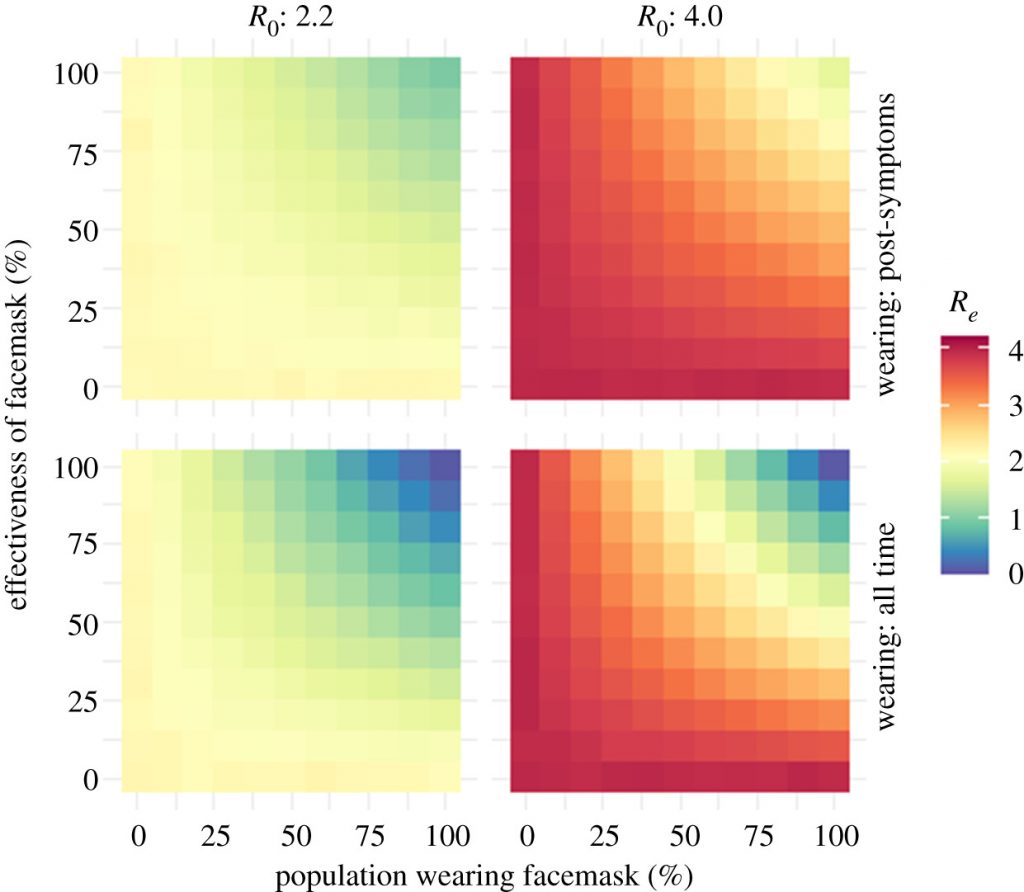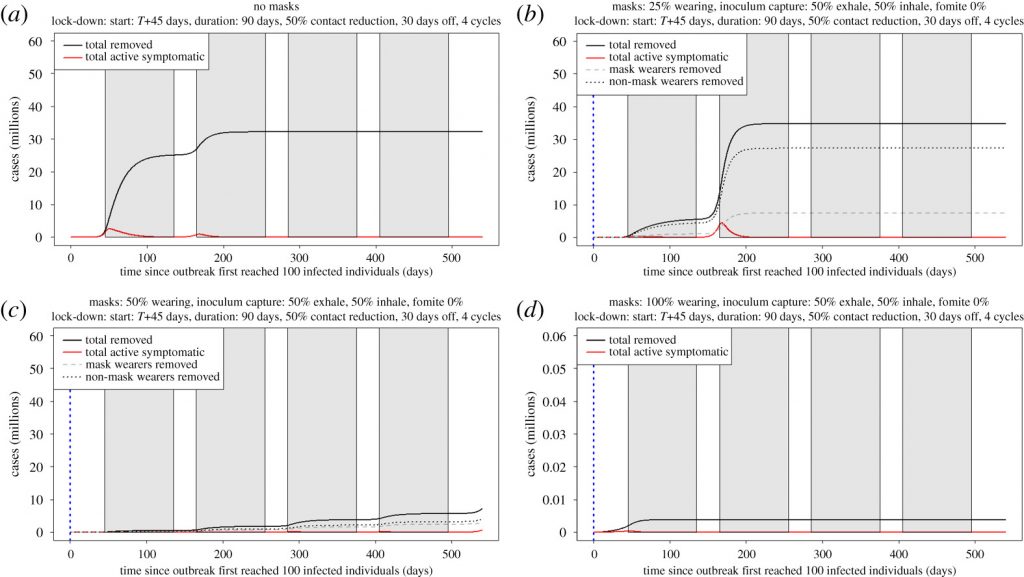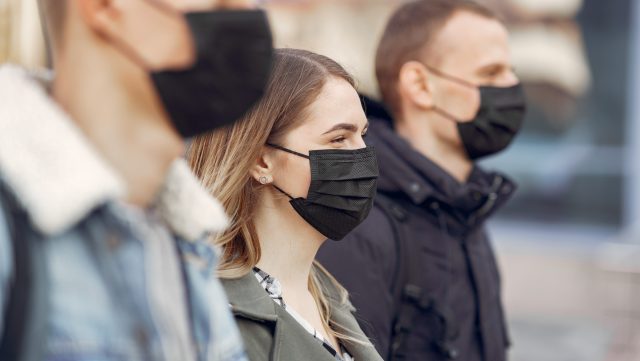Wearing facemasks wherever you go; whatever you do, is now becoming a new familiar practice of the new normal – even in the supermarkets across Myanmar, you need to wear facemasks to go inside, and in some areas, certain fines and punishments will be imposed if you don’t.
Last week, both surveys from Cambridge and Greenwich universities have showed that wearing facemasks could be more beneficial as non-pharmaceutical intervention, especially under the circumstances in which high-technologies were involved, for example – contact tracing by using mobile apps or rapid case detection via molecular tests are not reliable and sustainable; and wearing face masks in public might be more crucial to prevent the aftermaths of the new COVID-19 alike outbreaks in the future.
The joint team of mathematicians, physicians and engineering scientists from Cambridge and Greenwich universities conducted two surveys into one in order to estimate and calculate the possibilities of the dynamics of the COVID-19 epidermis whether wearing face masks in public under two conditions of ‘with lock-down’ and ‘without lockdown’ periods. The results, which pointed to the importance of wearing face masks in public, proved that the virus will be constantly gone.
The report published on 10th June 2020 by The Royal Society Publishing showed that when you wear face masks in public (even before the symptoms first appear), the effective reproduction number Re of the virus can be reduced below 1 leading to the mitigation of the pandemic. Under certain conditions, when lock-downs are implemented in combination with 100% use of face masks, there will be less transmission of the virus, spontaneously taking away the risk of another ridge and last, the spread of the disease can be brought under control.
Thus, precisely, wearing face masks and lock-downs can hinder the resurgence of the disease for 18 months and it will be more effective if we wear face masks in crowded places to prevent the spread of the virus rather than once it has spread.
In fact, the average numbers of infections by an individual in public changes and correlates depending upon the two factors: (1) the numbers of population wearing facemask, and (2) the efficiency of the masks. Then, the analysis was, further, proceeded with two scenarios of (a) face masks worn in post-symptom of COVID-19 are found, and, (b) facemask wore all the time.

Re = The expected number of new cases caused by a single infectious person.
Ro = The initial reproductive numbers.
The data analysis mentioned above pointed that wearing facemask all the time can reduce the expected numbers of new case (i.e. Re – Pink line) towards below 1, leading to the limiting and control of the further COVID-19 case, while compared to the wearing masks in post-symptoms – could be problematic, even wearing 95% protection masks such as N-95, may case higher than one value of Re when the initial reproductive numbers is 4.0 – which means that more than one people could be infected as the further COVID-19 cases.
The efficiency of the facemasks, according to the figure, contributes the important role in which the higher the quality of the face mask, the lower the further infectious cases may possibly be both for two conditions of wearing facemask all the time, and, wearing facemask in post-symptoms.
Hence, all kinds of face mask should be effective in preventing the virus at least; while the special masks with the purposes of prevention diseases such as surgical (or) respirator masks are the best and most effective – if 95% of the total population wore face masks (with the similar efficiency of N95), the infection numbers or the spreading rate of diseases (Ro) would be decreased to less than 1, however, homemade masks, which could cover only 50% of the droplets, could be beneficials at population-levels.
Even it is more suggested in spite of higher numbers of the initial infectious cases (R0 = 4.0), wearing a facemask after the onset of the COVID-19 symptoms can still reduce the further infectious cases (Re) to just below 2, especially if high adoption and higher efficiency of the facemasks are practised.

Unfortunately, the study highlighted that lockdown periods alone cannot prevent the resurgence of the secondary and tertiary waves of the pandemic; and which may be larger than the initial numbers until and unless lockdowns are combined 100% wearing of face in public which would dramatically decrease and delay the subsequent waves of the COVID-19.

The more important thing is even if the public wears facemask simultaneously within the first lockdown periods, major benefits would still be achieved by preventing the upcoming waves of COVID-19. The best practice is the combination of facemask wearing and lockdowns, which will provide a better solution than isolations, in order to dramatically control the consequences and further cases of COVID-19.
Thus, the scientists remarked that these findings and results can be used for both developed countries and developing countries, in which the majority of the people are under poor conditions; however, fabrication of home-made, effective facemasks is possible.
‘My mask protects you, your mask protects me’.










